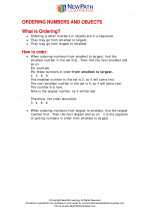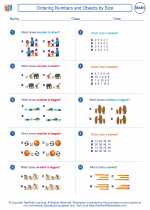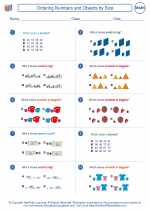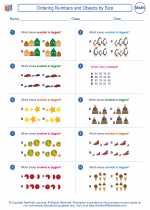Ordering Numbers and Objects by Size -> ordering numbers
Ordering Numbers
Ordering numbers is the process of arranging a set of numbers in a specific sequence based on their numerical value. There are three main ways to order numbers: ascending order, descending order, and comparing numbers using inequality symbols.
Ascending Order
When numbers are arranged in ascending order, they are listed from the smallest to the largest. For example, the ascending order of the numbers 5, 2, 8, and 3 would be 2, 3, 5, 8.
Descending Order
Descending order is the opposite of ascending order. Numbers are listed from the largest to the smallest. Using the same example, the descending order of the numbers 5, 2, 8, and 3 would be 8, 5, 3, 2.
Comparing Numbers
When comparing numbers, we use inequality symbols such as < (less than), > (greater than), ≤ (less than or equal to), and ≥ (greater than or equal to). These symbols help us determine the relationship between two or more numbers.
Practice Example
Let's order the numbers 12, 7, 19, and 4 in ascending order. The correct sequence would be 4, 7, 12, 19.
.◂Math Worksheets and Study Guides First Grade. Ordering Numbers and Objects by Size

 Worksheet/Answer key
Worksheet/Answer key
 Worksheet/Answer key
Worksheet/Answer key
 Worksheet/Answer key
Worksheet/Answer key
 Worksheet/Answer key
Worksheet/Answer key
 Worksheet/Answer key
Worksheet/Answer key
